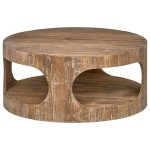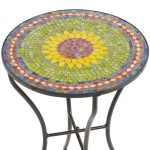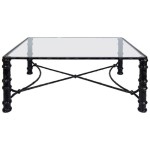Advertising Coffee Table Books: A Guide For The Professionals 2024
Coffee table books, often oversized and visually striking, serve as potent advertising tools when strategically employed. They offer a unique opportunity to engage potential clients and reinforce brand identity in a tangible and lasting manner. This guide delves into the effective utilization of coffee table books for professional advertising in 2024, outlining key considerations for design, content, distribution, and measurement.
The enduring appeal of print media in a digital age is undeniable. Coffee table books capitalize on this appeal, providing a tactile and immersive experience that digital advertising frequently lacks. Unlike fleeting online advertisements, a well-crafted coffee table book resides physically, offering repeated exposure to the brand and its message. Its presence communicates quality, attention to detail, and a commitment to delivering a premium product or service.
The effectiveness of a coffee table book as an advertising medium hinges on thoughtful planning and execution. Simply placing a company logo on a collection of generic images will not yield the desired results. Professionals must carefully consider the target audience, the brand message, and the overall goals of the advertising campaign to ensure the book resonates with its intended recipients and achieves its objectives.
Understanding the Target Audience
Identifying the target audience is the crucial first step in developing an effective advertising coffee table book. Understanding the demographics, interests, and preferences of the intended recipients will directly influence the book's theme, content, and design. For example, a law firm targeting high-net-worth individuals might feature images of opulent estates and sophisticated interiors, coupled with concise, persuasive text highlighting their expertise in estate planning. Conversely, an architectural firm seeking to attract environmentally conscious clients might showcase sustainable building designs and eco-friendly materials, emphasizing their commitment to environmental responsibility.
Market research is essential for gaining a thorough understanding of the target audience. This research can include surveys, focus groups, and analysis of existing customer data. The insights gained will inform the selection of imagery, the tone of the text, and the overall aesthetic of the book. Failure to adequately understand the target audience can result in a book that fails to capture their attention or resonate with their values, rendering the advertising investment ineffective.
Consider also the context in which the book will be viewed. Will it be placed in waiting rooms, executive offices, or client homes? The intended environment will influence the optimal size, weight, and durability of the book. A book intended for frequent handling in a public space should be more robust and resistant to wear and tear than one intended for private display.
Crafting Compelling Content
The content of the coffee table book should be both visually appealing and informative, striking a balance between showcasing the brand's aesthetic and conveying its core values. The book should tell a story, creating an emotional connection with the reader, rather than simply presenting a collection of unrelated images. This narrative can be built around the company's history, its mission, its innovative products or services, or its commitment to social responsibility.
High-quality photography is paramount. Invest in professional photographers who understand the brand's aesthetic and can capture images that are both visually stunning and authentic. The images should be carefully curated to create a cohesive narrative and evoke the desired emotions. Avoid generic stock photos, as they can detract from the book's credibility and undermine its overall impact.
The text should be concise, engaging, and informative, providing context for the images and reinforcing the brand's message. Avoid overly technical jargon or marketing clichés. Instead, focus on telling compelling stories that highlight the company's achievements and its value proposition. Consider incorporating testimonials from satisfied clients to further enhance the book's credibility.
The design of the book should be consistent with the brand's overall identity. Use fonts, colors, and layouts that reflect the brand's personality and create a cohesive visual experience. Pay attention to the details, such as paper quality, binding, and printing techniques, as these elements can significantly impact the book's overall perceived value.
Strategic Distribution and Measurement
The distribution strategy for the coffee table book should be carefully planned to ensure it reaches the target audience effectively. Consider distributing the book through various channels, such as direct mail, client meetings, industry events, and corporate gifts. Avoid mass distribution, as this can dilute the book's impact and diminish its perceived value. Instead, focus on targeted distribution to key prospects and existing clients.
Personalization can enhance the impact of the book. Consider adding a personalized message to each copy, addressing the recipient by name and referencing their specific interests or needs. This demonstrates a genuine interest in the recipient and increases the likelihood that they will engage with the book.
Measuring the effectiveness of the coffee table book as an advertising tool can be challenging, but it is essential for determining its return on investment. Track key metrics such as the number of books distributed, the number of inquiries generated, and the number of new clients acquired. Consider including a unique call to action in the book, such as a QR code linking to a landing page, to track engagement and measure the book's impact on website traffic and lead generation.
Gathering feedback from recipients is also valuable. Conduct surveys or interviews to gauge their impressions of the book and their perception of the brand. This feedback can be used to refine future editions of the book and improve its overall effectiveness. Consider offering an incentive for participation, such as a gift card or a discount on the company's products or services.
The use of analytics can provide deeper insights into how the coffee table book is being received and utilized. Embedded QR codes can track scans and referral traffic, allowing marketers to understand which sections of the book are most engaging. Website analytics can also reveal whether potential customers who received the book are more likely to convert or make a purchase. These data points provide invaluable information for optimizing future advertising campaigns and refining the target audience.
In conclusion, advertising coffee table books, when thoughtfully designed and strategically distributed, offers a powerful means of increasing brand awareness, engaging potential clients, and reinforcing a company’s image. By understanding the target audience well, crafting content that tells a story, and meticulously planning the distribution and measurement of its effectiveness, businesses can leverage coffee table books to achieve their marketing goals in 2024 and beyond.

50 Coffee Table Books That Are So Beautiful It Hurts

How To Make A Coffee Table Book 10 Step Guide Blurb Blog

How To Make A Coffee Table Book 10 Step Guide Blurb Blog

50 Coffee Table Books That Are So Beautiful It Hurts

50 Coffee Table Books That Are So Beautiful It Hurts

Best Coffee Table Books 2024 From Photography To Interior Design The Independent

50 Coffee Table Books That Are So Beautiful It Hurts

43 Best Coffee Table Books To Give As Gifts 2024 The Strategist

How To Make A Coffee Table Book 10 Step Guide Blurb Blog

50 Coffee Table Books That Are So Beautiful It Hurts
Related Posts








